Film as an art form is universally acknowledged, capable of moving us to tears, inducing belly-deep laughter, or even sparking introspection about life’s complexities. Nevertheless, there’s another intriguing aspect that adds an additional layer of fascination, namely merchandising. Far from just being commercial endeavors, movies have often served as launchpads for toy marketing, integrating the big screen’s allure with the tangible appeal of collectibles.
To delve into this, one needs to first understand what merchandising is. Simply put, it’s a promotional strategy to boost sales of goods and services, often using the persuasive pull of movies, cartoons, or other forms of media to charm potential buyers. Over the years, this strategy has made itself known through a gamut of blockbuster movie-themed toys, dolls, action figures, and clothing.
For instance, you might remember walking into a store and finding shelves teeming with lightsabers and Darth Vader masks around the time of a Star Wars movie release. This phenomenon of toys that inspired movies and vice versa underscores the reciprocal relationship between the film industry and toy manufacturers.
As we journey through some iconic movies known for their toy marketing, we’ll see this fascinating aspect of cinema unfold in a myriad of engaging ways. So, without further ado, let’s take a closer look at these memorable examples.
1 – Unfolding the Strategy Behind G.I. Joe: The Rise of Cobra (2009)
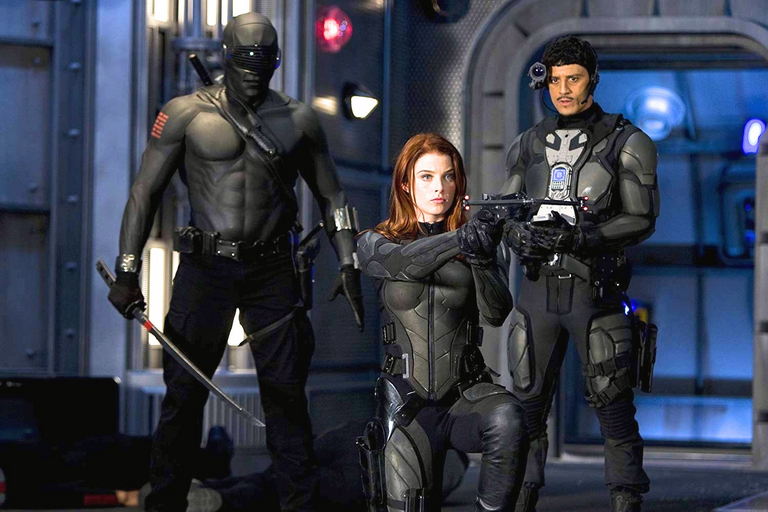
For generations, G.I. Joe has been a household name in the realm of action figures. Launched in the 1960s by Hasbro, these figures were a sensation, inspiring imaginative playtime across the globe. Flash forward to 2009, and we see the fusion of this iconic toy line with the magic of the silver screen in “G.I. Joe: The Rise of Cobra.”
The film provided a platform to introduce new characters and gadgets, which naturally became additions to the G.I. Joe action figure line. The movie’s merchandising was handled deftly. By reintroducing a timeless favorite in a contemporary setting, the film was able to bring back the nostalgic charm of the G.I. Joe action figures for the older generation, while captivating younger audiences with its engaging plot and characters.
It was a movie-toy marketing success. Moreover, the excitement generated by the film led to a spike in sales of G.I. Joe figures, proving how strategic movie-making could bolster toy marketing.
2 – Delving into the Strategy of Bratz: The Movie (2007)
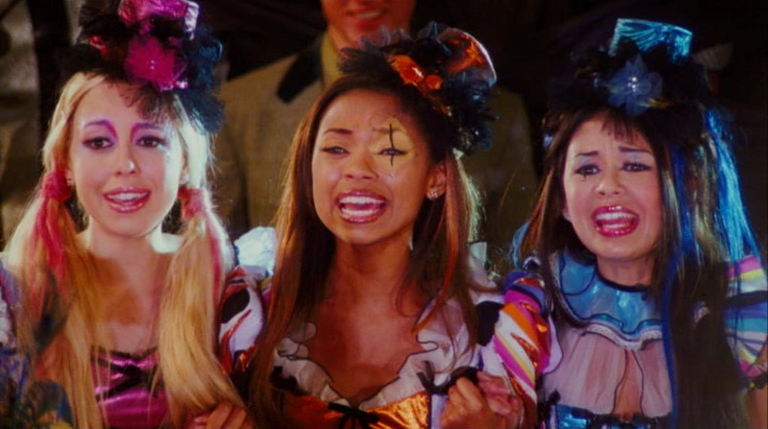
Bratz dolls, with their trendy clothes and unique personality-driven backstories, had become a popular choice among young girls, rivaling even the iconic Barbie doll. To capitalize on this, “Bratz: The Movie” was released in 2007.
The film featured the well-known Bratz characters – Cloe, Yasmin, Sasha, and Jade, living out their high school lives with a touch of drama and flair. Just like the dolls themselves, the film targeted the younger audience who had been captivated by the stylish and modern personas of the Bratz dolls.
The release of the film brought about an updated line of Bratz dolls, each reflecting the personality and style of their movie counterparts. The production company not only used the movie to sell toys but to solidify the Bratz brand in the minds of its target audience. In doing so, it cleverly strengthened its foothold in the fiercely competitive toy market.
3 – Unmasking the Magic of My Little Pony: The Movie (2017)
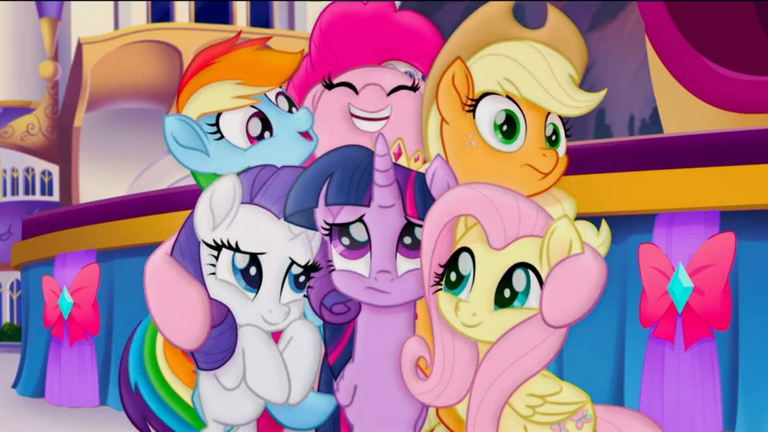
Since its inception, the My Little Pony franchise has enjoyed enormous popularity, with its colorful ponies and magical universe enthralling children worldwide. So, when “My Little Pony: The Movie” was released in 2017, it wasn’t just a film – it was an extension of a beloved universe into a new medium.
The movie was a musical fantasy featuring favorite characters like Twilight Sparkle, Applejack, Rainbow Dash, and more, embarking on a mission to save their homeland. It served as a perfect vehicle for Hasbro to introduce a new line of toys, based on the characters, their updated looks, and the fantastical elements from the movie.
This effective toy merchandising tactic ensured that fans had tangible mementos of the film’s magic to bring home, thereby keeping their connection with the My Little Pony Universe alive and ongoing. In this way, “My Little Pony: The Movie” was not just a cinematic venture but a strategic component of the franchise’s overall marketing plan.
4 – Behind the Bricks: The Lego Movie (2014)
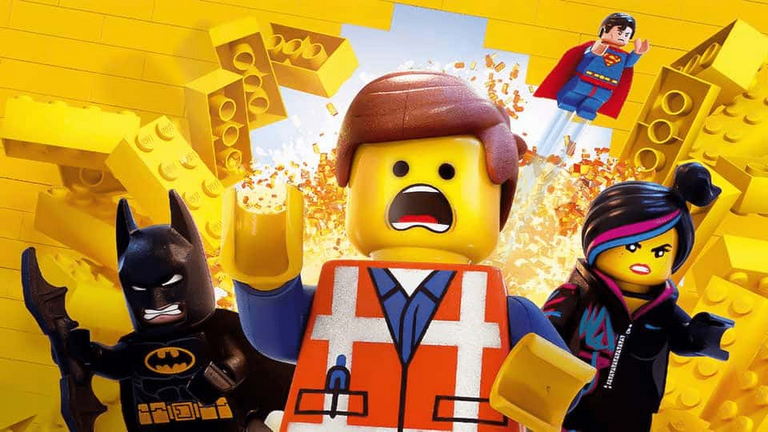
Perhaps one of the most inventive examples of toy marketing through cinema is “The Lego Movie” by Phil Lord and Christopher Miller. Notably, this innovative film, starring Chris Pratt, Will Ferrell, and Elizabeth Banks, centered on a world constructed entirely from Lego bricks and infused with the brand’s distinctive sense of humor.
This computer-animated comedy was not just a box office hit, but it brought an entirely new level of engagement to the iconic Lego sets. Post-release, Lego unveiled a series of new construction sets, minifigures, and video games, all based on the characters, themes, and sets from the movie.
In essence, “The Lego Movie” was not just a film but an ingenious marketing campaign to sell toys. It breathed life into the Lego universe, creating a tangible connection between the physical toys and their on-screen personas, thereby boosting Lego’s brand loyalty and sales.
5 – Decoding Mars Attacks! (1996)

“Mars Attacks!” was a unique blend of science fiction and comedy, directed by Tim Burton, and featuring an ensemble cast including Jack Nicholson and Natalie Portman. But what makes this film unique in the realm of toy marketing is its origin. The film was essentially based on a trading card series from Topps, released in the 1960s.
Tying in with the release of the film, Topps reissued the original trading cards, alongside new ones featuring scenes from the movie. Action figures were also released, bringing the film’s eccentric alien characters to life. These collectibles targeted both the movie’s audience and nostalgic fans of the original cards, creating a unique merchandising opportunity that demonstrated the versatility of toy-to-movie marketing.
6 – Max Steel (2016): A Leap from Toy to Screen

The “Max Steel” action figures, initially released by Mattel in the late ’90s, featured Max, a teen who could harness energy with the help of his alien companion, Steel. In 2016, these toys got their live-action film adaptation, directed by Stewart Hendler and starring Ben Winchell in the lead role.
The movie’s narrative revolved around the origins of Max Steel, serving to introduce the brand to a new generation of children while rekindling the interest of those who grew up with the toy line.
In conjunction with the movie, Mattel released a new line of “Max Steel” action figures, reimagined to mirror the characters in the film. The film was an immersive form of toy marketing, linking the audience’s cinematic experience with the action figures, thereby expanding the universe of Max Steel beyond the confines of its original medium.
7 – A Transformative Journey: Transformers: The Movie (1986)

“Transformers: The Movie” stands as an epitome of toy marketing done right. Released in 1986, this animated film, directed by Nelson Shin, capitalized on the massive popularity of Hasbro’s Transformers action figures. Furthermore, Peter Cullen and Frank Welker lent their voices to Optimus Prime and Megatron, the iconic leaders of the Autobots and Decepticons.
The film showcased a high-stakes battle between the Autobots and Decepticons, featuring new characters and vehicles, which coincided with the release of a new line of Transformers toys. The synergy between the film and the toy line was such that every Autobot, Decepticon, or Cybertronian spacecraft had a corresponding action figure available in the market.
This marriage of cinema and toy marketing ensured that the Transformers universe wasn’t confined to just playrooms but was etched in popular culture, reinforcing Hasbro’s market hold on transforming robot toys.
8 – Masters of the Universe (1987): Beyond Eternia
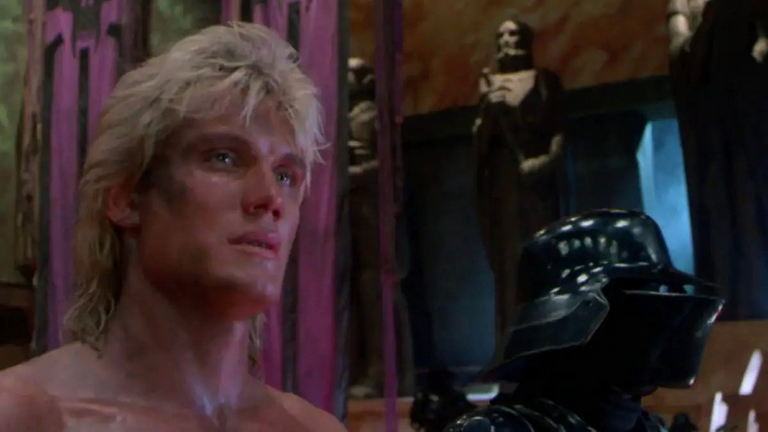
“Masters of the Universe,” directed by Gary Goddard and featuring Dolph Lundgren as He-Man, was another ’80s movie designed to propel a line of toys. Based on Mattel’s He-Man action figures and the animated television series, the film expanded the He-Man lore, introducing audiences to new characters and landscapes.
Accompanying the movie’s release, Mattel launched a new range of He-Man action figures and playsets, incorporating characters and scenarios from the film. Additionally, the film itself was a major marketing tool to sell toys and served as an extended commercial, making the He-Man franchise a household name.
9 – Sewer to Stardom: Teenage Mutant Ninja Turtles (1990)

“Teenage Mutant Ninja Turtles,” directed by Steve Barron, took the Playmates’ toy line and the comic book series to the big screen. The film portrayed the adventures of Leonardo, Donatello, Michelangelo, and Raphael – four anthropomorphic turtles trained in ninjitsu.
With the film’s release, Playmates unveiled an assortment of action figures, vehicles, and playsets, reflecting the movie’s grittier tone compared to the animated TV series. The movie successfully served as a platform to boost the toy marketing, enhancing the overall TMNT brand value. It was a shining example of a synergistic relationship between toys and their cinematic counterparts, paving the way for numerous sequels and merchandise in the years to come.
The Power of Merchandising in the Cinematic Universe
Why is merchandising so integral to the film industry? Merchandising has dual advantages, enhancing the cinematic experience while generating additional revenue streams for production companies. However, the impact runs deeper, often altering public perception and even helping build cultural phenomenons.
For instance, think about how Harry Potter wands or Iron Man figurines aren’t merely toys – they’re mementos of a beloved universe, encapsulating a piece of the magic that fans yearn to keep close. As such, merchandise marketing goes beyond materialistic gains, becoming a means of connection between the viewer and the cinematic world.
Moreover, it creates brand recognition and boosts anticipation for the movie. Remember the frenzy leading up to a new Disney or Marvel release? The appearance of themed toys, clothing, and accessories in the market before the film’s release contributes to a sense of collective excitement.
In conclusion, while film producers may sell toys as part of their merchandising strategy, what they’re really selling is a piece of the dream, a token from a universe that viewers have come to love.

